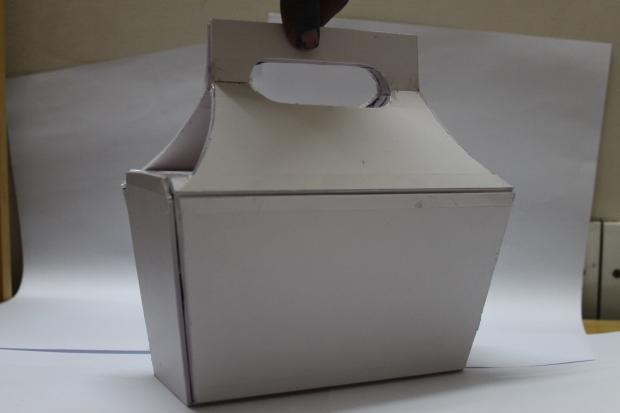
Photo: Dibaker Sen, CPDM, Mechanical Engineering.
In a society dominated by people who can independently carry out daily activities, the challenges faced by differently abled individuals are rarely acknowledged. With thoughtful design approaches, simple day-to-day activities could be made easier for such individuals. A great example of this is a novel hygiene product designed by Master students Shubham Pudke and Suyog Dhanawade under the guidance of Prof. Dibakar Sen at the Centre for Product Design and Manufacturing, Indian Institute of Science, Bangalore to aid disabled women with just one functional hand. The newly designed sanitary napkin wearing aid not only meets the hygienic demands, but also enables its use without relying on a caregiver. “Activities of daily lives are primary activities for everyone for their dignity and independence from physical support of others. It enables other family members to explore sources of earnings when the primary bread earner becomes disabled due to any circumstances”, says Prof. Sen, elaborating on the motivation for the study.
The researchers started off with a survey of about 40 women between the ages of 18 to 36 years to understand the normal usage pattern and to identify the design requirements. The survey highlighted the aspects of the need for compatibility with one hand operation, minimum operation steps and ease of use in addition to making the product lighter and affordable. The designers designed the final product considering these factors.
There were definitely some challenges that came up during the initial phase of the designing process, given the unconventional topic. “The primary challenge was to collect relevant data to start making the design. Due to the strong stigma and privacy associated with the subject matter, it was difficult to conduct the problem analysis”, explains Dr. Sen. Lack of female volunteers to validate and test the product posed a major challenge for the team, which had to resort to role-playing to accomplish its goal.
The team developed a few prototypes of a platform/board that can assist disabled women to wear and change sanitary napkins independently and conveniently, even in public toilets. Furthermore, these prototypes were ranked on the basis of parameters like ease of operation, durability, aesthetic appeal, maintenance, etc. Weights were associated to these parameters based on their importance and the different prototypes were ranked. The highest scorer was the prototype selected for further analysis, which had a foot rest that can assist one in changing and wearing a sanitary napkin with one hand.
The researchers constructed a physical model of the prototype using a paper-faced foam board and the prototype was tested by one of the team members. The proposed design satisfied the design requirement they set out to achieve. As a part of the next steps, the team is currently working on a foldable and portable version of the prototype, which may assist these women during travel. The dimensions of design were made to fit the average size of the sanitary napkins available in the market. “The price aspect of the prototype was not calculated at this stage. However, considering that the product design is simple and will be made in plastic, the price of such a product will be quite low”, assures Prof. Sen. This research highlights the role designers’ play in building an inclusive society where a physical disability is no more a concern.
























